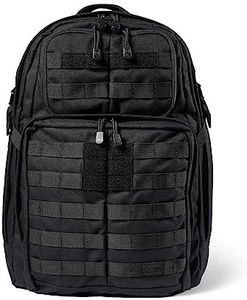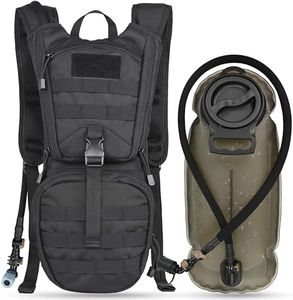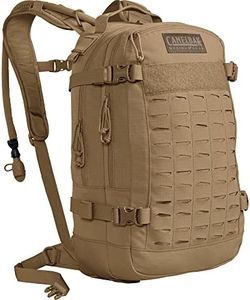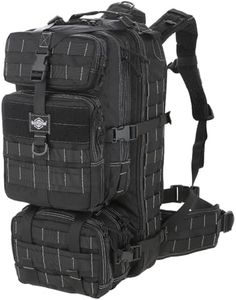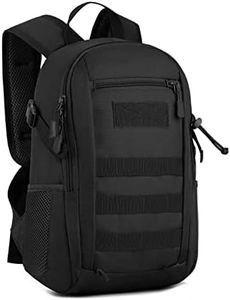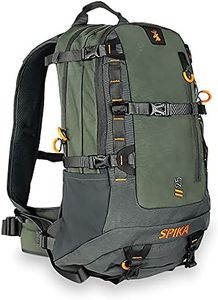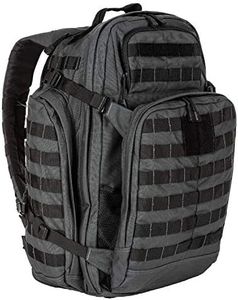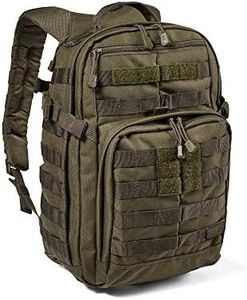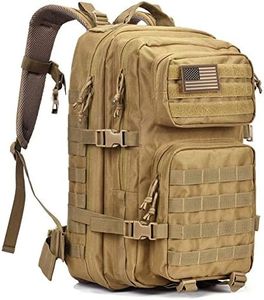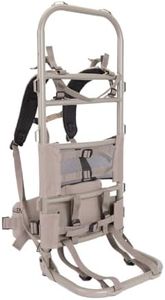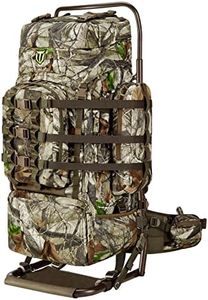We Use CookiesWe use cookies to enhance the security, performance,
functionality and for analytical and promotional activities. By continuing to browse this site you
are agreeing to our privacy policy
10 Best Hunting Backpacks
From leading brands and best sellers available on the web.Buying Guide for the Best Hunting Backpacks
Choosing a hunting backpack is all about matching your pack to your hunting style, the terrain you'll be exploring, and how long you'll be out in the field. The right backpack will help you carry your gear comfortably and quietly, stay organized, and even handle bringing home game. It's important to focus on how much you need to carry, the conditions you'll face, and the features that make your trip smoother, safer, and more enjoyable.Capacity (Volume)Capacity is measured in liters and tells you how much the backpack can hold. Small packs (under 30 liters) are great for short hunts or when you only need essentials. Medium packs (30-50 liters) are good for all-day trips, letting you carry food, water, and extra layers. Large packs (50 liters and up) can handle multiple days or heavy loads, including game meat. Think about whether you'll be out for just a few hours or overnight—the more time you spend, the more capacity you need. Pick a size that fits your hunt length but isn’t overly bulky for your style.
WeightThe weight of a hunting backpack includes how much the pack itself weighs when empty. Lighter packs are easier to carry and move quickly with, but sometimes they sacrifice features or durability. Heavier backpacks may offer more padding and support or extra features but can add strain over longer treks. If you hike long distances or hunt in rough terrain, try to balance weight and comfort so you’re not carrying extra bulk you don’t need.
Frame TypeFrame type refers to the structure that supports the backpack. Frameless packs are lightweight and move easily, best for day trips or lighter loads. Internal frames are popular because they keep your load stable and hug your back, great for tricky terrain and medium loads. External frames are sturdy and make it easier to haul heavy or awkward loads, like large game, but can be bulkier. Choose based on the type of hunting and weight you expect to carry.
Fit and ComfortFit is about how the backpack feels on your body. Look for adjustable shoulder straps, padded hip belts, and chest straps so you can distribute weight properly. A well-fitting pack makes it easier to carry heavy loads with less fatigue. Some backpacks offer different sizes or torso lengths, so measure yourself and try packs on if you can. Good fit is crucial, especially if your hunts last for hours or days.
Organization and AccessibilityOrganization means the number of pockets, pouches, and access points the backpack has. Some have lots of compartments for easy sorting of gear like calls, ammo, or snacks. Others are more basic for a minimalist approach. Accessibility is about how easily you can get to your items—side zippers, top openings, and separate compartments help. If you like things well-sorted and want fast access to gear, look for more organization. If you pack light, simple designs work too.
Durability and MaterialDurability comes from the materials used, like tough nylon or polyester, reinforced stitching, and strong zippers. Some packs are also weather-resistant or waterproof to protect your gear from rain and rough use. Durable packs last longer, especially if you hunt in thick woods, rugged mountains, or harsh weather. Pick materials that match your environment and how hard you are on gear.
Meat Hauling CapabilitiesSome hunting backpacks are designed to help you carry game meat, with built-in meat shelves or expanding compartments. This feature is important for big game hunters who may need to pack out their quarry over long distances. If you're mostly hunting small game or won't be carrying meat, this may be less important. Think about your hunting plans—if you expect to carry heavy loads, make sure your backpack can handle it.
